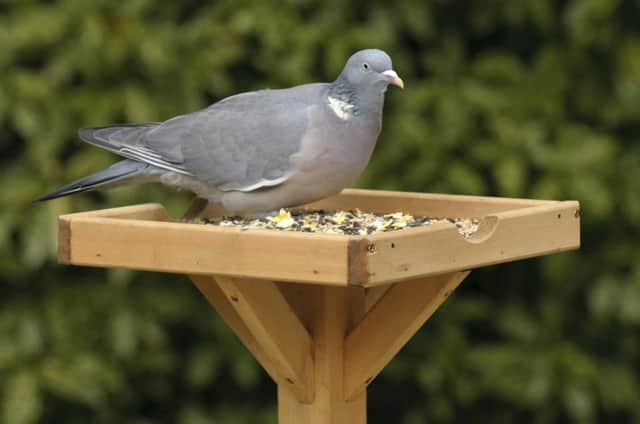Take part in this year’s Big Garden Birdwatch


The activity, to take place on Saturday and Sunday, January 25 and 26, is the biggest garden wildlife survey in the world and last year 918 people in East Dunbartonshire joined over 47,000 Scots to count the birds in their garden or local parks.
The most common garden visitor in the area was the woodpigeon with an average of three spotted at any one time.
Advertisement
Hide AdAdvertisement
Hide AdSince its launch in 1979, the Big Garden Birdwatch has provided RSPB Scotland with information about changes in numbers of garden birds in winter and helped alert conservationists to any worrying declines.
In 2013, the survey revealed that sightings of one of the country’s most threatened garden regulars, the starling, fell by a further seven per cent.
It means since the turn of the century, the average number of starlings spotted in Scottish gardens during the Big Garden Birdwatch has dropped by almost a quarter (22 per cent).
Numbers of house sparrows, also on the red list, dropped by almost eight per cent in gardens compared to 2012.
Advertisement
Hide AdAdvertisement
Hide AdThese worrying declines mirror the findings of the State of Nature report which was launched earlier this year by 25 UK wildlife groups with the backing of Sir David Attenborough. The report revealed that 60 per cent of the wildlife species included are in decline.
This year, for the first time, participants are being asked to log some of the other wildlife they see in their gardens too.
RSPB Scotland wants to know whether people ever see deer, squirrels, badgers, hedgehogs frogs and toads in their gardens, to help build an overall picture of how important our gardens are for giving all types of wildlife a home.
The charity will gather useful information about these other species and share them with its conservation partners after the survey.
Advertisement
Hide AdAdvertisement
Hide AdOnce RSPB Scotland knows which species people are regularly seeing, it will also be able to tailor its advice on giving nature a home so that people can help their wild visitors nest, feed and breed effectively.
Participants don’t have to count these other species over the Big Garden Birdwatch weekend, just tell RSPB Scotland whether they have ever seen them in their gardens, at any time of year.
Louise Smith of RSPB Scotland said: “Every single person who takes part in the Big Garden Birdwatch is helping us learn about what is happening with our much-loved feathered friends. These are birds that really count on us. At this time of year in particular they come to our gardens for help – with food, water and shelter.
“People all across Scotland help give them a home by providing these things and the Big Garden Birdwatch allows us to check what impact their help is having. The situation has been dire for birds like starlings and sparrows over the last 30 years, but by knowing the exact situation, we can help to put things right.”
Advertisement
Hide AdAdvertisement
Hide AdTo take part, people are asked to spend just one hour at any time of Big Garden Birdwatch weekend noting the highest number of each bird species seen in their gardens or local outside space at any one time.
Schoolchildren and teachers will be doing the same in their school grounds as part of Big Schools’ Birdwatch from January 20 to February 14.
Visit www.rspb.org.uk/birdwatch and www.rspb.org.uk/schoolswatch to find out how to take part at home or at school.